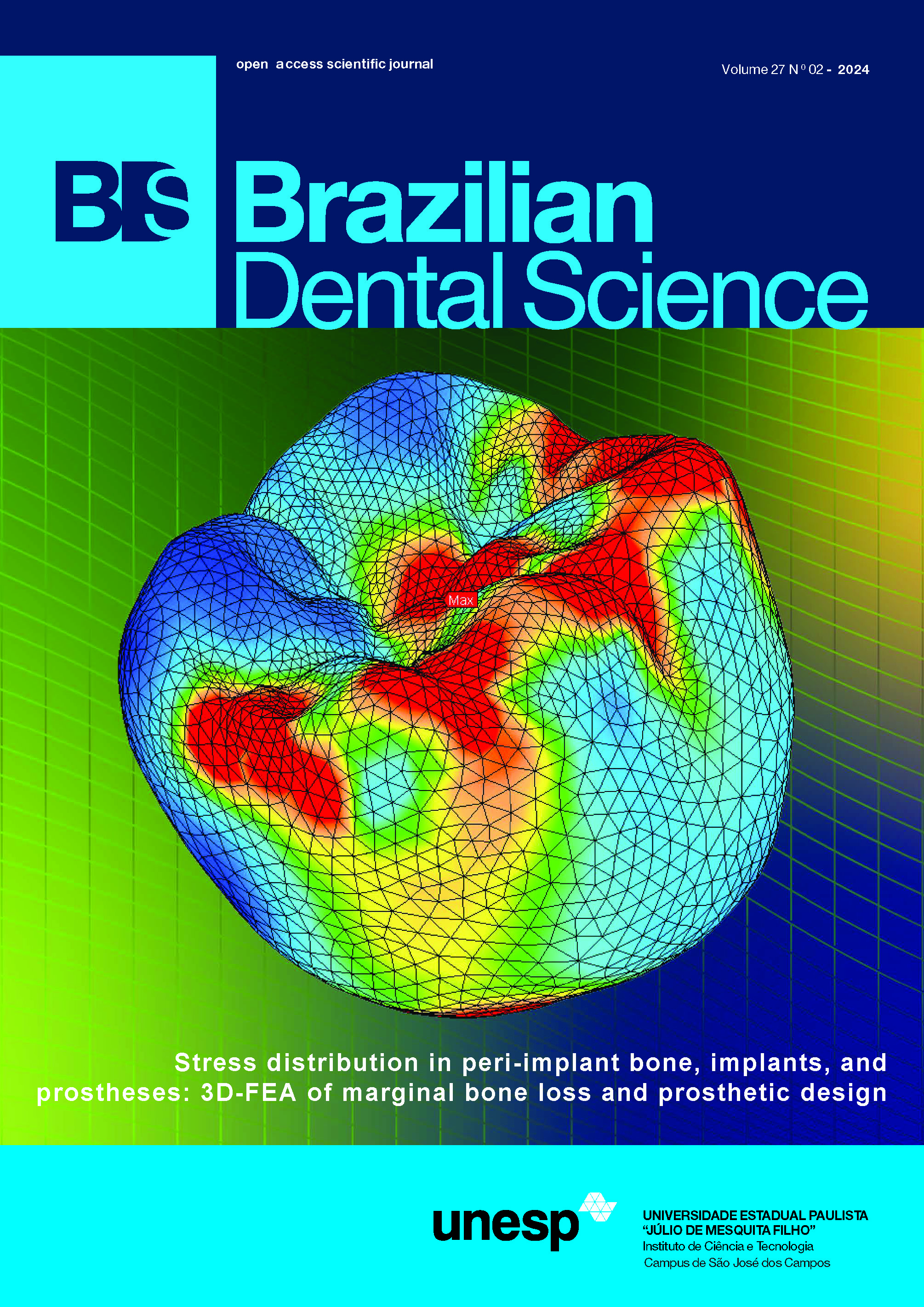How reverse planning and the use o digital devices revolutionize implantology? – Case report
DOI:
https://doi.org/10.4322/bds.2024.e4327Abstract
Objectives: The aim of the study was to demonstrate how digital devices can be applied in the field of implant dentistry. By integrating data from computed tomography, panoramic radiography, and intraoral scanning into software, it is feasible to perform virtual planning of prosthetic rehabilitation and implant placement predictably. The adoption of reverse planning increases the chances of treatment success. Material and Methods: In this case report, oral rehabilitation of the area of tooth 36 was conducted through implant placement. The implant was installed based on the virtual planning done in the software, followed by the production of a rigid static guide and guided surgery. Results: It was noted that there is a learning curve associated with the use of these technologies, requiring professionals to have theoretical and practical knowledge of digital devices. By using software and surgical guides obtained through 3D printing, it was possible to achieve high precision and preserve vital structures such as blood vessels and nerves, resulting in aesthetic and functional satisfaction for the patient. Conclusion: The use of digital devices in implant dentistry offers speed and predictability in treatment.
KEYWORDS
CAD/CAM; Dental planning; Dental prosthesis; Guided surgery; Implant.
Downloads
Published
How to Cite
Issue
Section
License
Brazilian Dental Science uses the Creative Commons (CC-BY 4.0) license, thus preserving the integrity of articles in an open access environment. The journal allows the author to retain publishing rights without restrictions.
=================




























